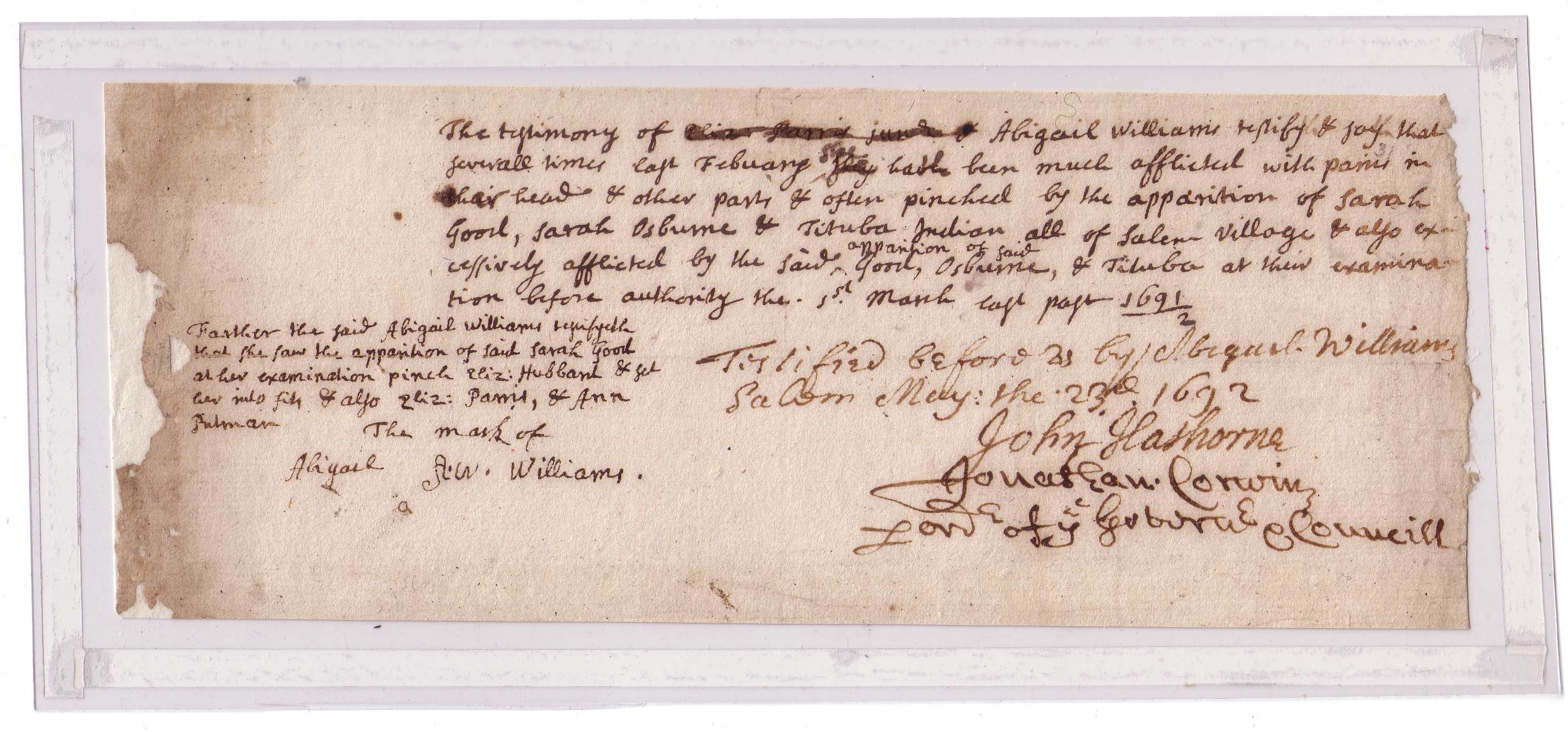Samuel Parris, a former planter and merchant in Barbados, moved to Salem Village with his family in 1689 upon the request of an influential elder who resided in the village, named John Putnam. A few years later, in February 1692, Parris’ daughter, Betty, became ill with an unknown condition. She complained of a fever, would have violent fits, clench in pain and acted in unusual behavior. However, due to a recently published book, “Memorable Providences” by Cotton Mather, the townspeople began to suspect witchcraft. “Memorable Providences” described an Irish woman in Boston who was suspected of witchcraft. Mather’s book was extremely popular at the time, and Betty’s behavior seemed to mimic the behavior of the woman described in Mather’s book. When seven of Betty’s friends began exhibiting the same unusual behavior as she displayed, the idea of witchcraft became increasingly more popular. The girls named Tituba, the Parris’ slave, Sarah Good, and Sarah Osborn, as their afflicters and arrest warrants were issued shortly after. During this time in Salem, everyone believed the devil was real and very near, thus causing the need for resolution. Tituba had first defended her innocence. However, she later proclaimed she was asked by Satan to do his work and that she was in fact a witch. This is what essentially began the Salem Witch Trials, for it further assured the ones who already believed and changed the minds of skeptics. Suspects were forced to confess as a means to avoid the gallows. Governor Phips created a new court solely for witchcraft cases, the “Court of Oyer and Terminer,” in an attempt to subside the chaos.



